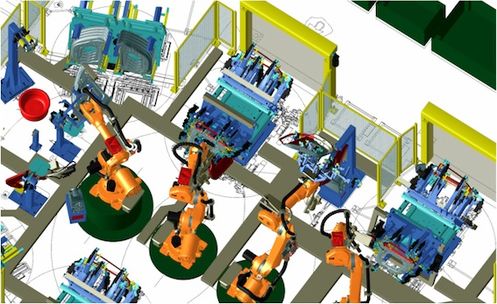Understanding The Role of Cloud in Digital Additive Manufacturing
There are 6.3 billion connections to the internet around the globe. According to Cisco, this figure will grow 60% by 2020. This enormous system of interconnections creates a ‘cloud’ of information and data that permeates cities around the globe. These clouds are now merging together and creating data sets of unprecedented scale.
Information is being created with an ever-accelerating velocity, but it has never been easier and more economical for data to be received and processed. For the industrial sector, a new digital model is emerging and the need to gather and analyze larger amounts of data is only getting more significant.
Over the past decade, cloud networks have hosted information that is managed through specialized artificial intelligence software. This artificial intelligence software is crucial to managing the cloud of information that runs on a loop of connected devices. Connected devices send information, merge into the cloud with more data, and that data is then analyzed. The resulting data set is then processed and fed back into the connected device. This feedback loop run by artificial intelligence is now being integrated into industrial businesses.
Digital Additive Manufacturing
The industrial models being created must be able to integrate and connect to the cloud. The explosion of sensors being added throughout factories will require that manufacturers create constant feedback loops of data and information, and this includes those using additive manufacturing for production. Companies currently implementing additive manufacturing are attempting to monitor, optimize, and upgrade their production line based on the quality of the parts produced. Massive amounts of data can be acquired every second through a fleet of sensors which can then hopefully be used to continuously improve parts in real time.
As production lines work towards high optimization via enormous amounts of data, cloud-based automation will become more of a norm in production lines. But this may raise questions in a cloud-based system — should businesses hold onto all their data, or should there be an expectation for a certain level of open source collaboration? The question really revolves around a classic case of mutual collaboration for a greater good versus protecting proprietary information that could be used for a competitive advantage. There seems to be an industry hope that a base level of data collaboration is possible that won’t compromise intellectual property, and can instead be used by entire industries resulting in a boost to all manufacturing operations as each company hopes to navigate this promising but uncertain future.
The industry 4.0 digital factory of the future will have unprecedented amounts of data running through it, and a cloud-based artificial intelligence architecture will be the key to managing and making use of the data. Digital additive manufacturing will greatly contribute to amount of data being fed into the cloud, and the cloud intelligence will be in the driver’s seat for improvements across design, quality, continuous improvement and throughput. Human-level general artificial intelligence may still be science fiction for now, but the latest advances in specialized artificial intelligence can be far superior to humans in many tasks and appear to be an ideal fit for processing and making improvements with the data generated by future additive manufacturing systems replete with advanced and highly accurate sensors.



